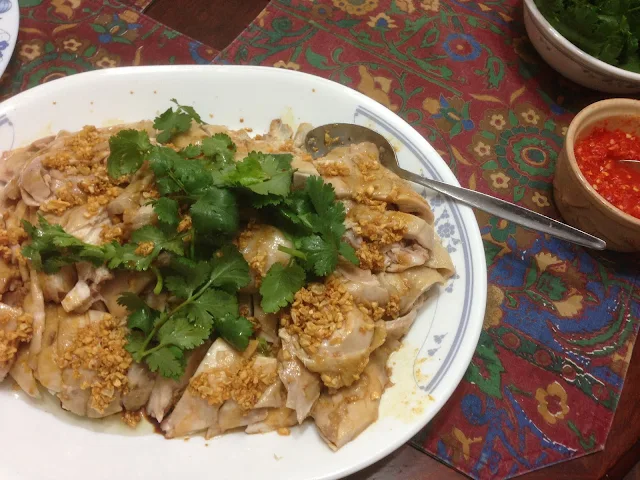
 |
| Crunchy on the bite - deep fried lotus roots, very East Asian but goes well with any beer |
Fusion offerings like the Salmon
Wafuu Carpaccio or the
Aburi Salmon rolls (made with both normal crab meat and soft shell crab variety) caught my eye as we studied the menu at Sushi Tei. Twilight was evolving outside but we were cocooned in a corner, dabbling in small talk and enjoying a reunion of sorts. There was a certain elegance of this place, for it was no street side noodle joint nor having the feel of eat and go, but more of a place with time on hand to enjoy the pace and discover hidden delights.
 |
| What stood out was the sauce to accompany the salad. |
We commenced with a simple but uplifting salad mix, enhanced by an extraordinary sauce. We did not choose seaweed nor avocado, but simple greens like an Aussie serving. We skipped over king fish, oysters, beef, tofu or octopus. We longed for sea urchin ( the
Nama Uni) but it was no longer available that evening. Service was satisfactory although the place was rather busy for a work day evening. Cuts were petite, presentation was with care and the ingredients used were full of flavours. I reckoned what won us was the attention to detail and a sense of uniqueness.
 |
| Spring specials - and I like the Bonito dishes. |
Spring menus were advertised in this late October visit. Boutique wines like Verdelho vintages and organic chardonnays grace your choices. There are loyalty cards to spur return visits but I figured the quality and variety of the menu at Sushi Tei were sufficient to entice me back. The restaurant is open every night and also has a sister operation at Liverpool Street in Sydney CBD.
 |
| Sushi Tei is located at the corner of Hunter and Elizabeth Streets in Sydney CBD North and shares a ground floor site with an ANZ Bank branch. |
 |
| Salmon roe or the Ikura, tuna and seaweed creations. |
Apart from the expected items of tuna
sushi and tender flavourful cuts of salmon
sashimi, I particularly enjoyed the Salmon head Oroshini, readily inviting bites of addictive snacks that exude taste and crunchiness. Another seafood item of interest is the Hotate miso mayo, or golden looking scallops on the shell grilled with a marinade of miso and mayonnaise.
Unagi avocado
temaki rolls are also one of my weaknesses, for my introduction to eel has been happily made through Nippon cuisine. The uninitiated may find peculiar the availability of fish floss, as opposed to meat floss, and Sushi Tei combines such floss with fried prawns in a
Maki.
 |
| A classic Cawan Mushi, with subtlety of steamed egg custard and ingredients such as mushroom bites. |
A twist on a soup is the salmon belly
Misoshiru, a rather rich ingredient to grace the otherwise plain miso soup. For beer lovers, there is nothing better to accompany your drink than with the
Hanasaki Ika tempura, or simply squid battered stuff. Soft shell crab is a favourite ingredient in Asian cuisine, especially for those blessed with long coast lines, whether they be Thailand or Vietnam. In Japan, the art is to attain the aromas of the shell crab with the crunchy bite of texture. Japanese cuisine is also fond of croquettes, although they are not strictly traditional and have been influenced by the Westernisation period in history. Sushi Tei in this respect offers the Hokkaido
Kani Cream Croquette, looking pretty and wholesome.
 |
| A dollop of ice cream flavoured by black sesame - the Kurogoma Aisukurimu. They also serve Matcha (green tea ) and the Azuki (red bean) varieties. |
There is often a limited range in Japanese dessert, so we reverted to relying on good old ice cream. The spectrum of jellies, sweet dumplings, chocolate creations, sweet buns, Nagasaki sponge cake
castellas and deep fried doughs like the
Sata Andagi is not fully available in a single outlet in Australia.
 |
| Chiefly Tower and shopping centre beckons from across the road. |
Squid and smelt roe, grilled mackerel, edible wild plants, these are some of the captivating items on the Sushi Tei menu. Try to get seats beside the windows, for you can also watch and stare at the street life that passes by. Whether for an evening gathering (as for seven of us) or savouring the food and drink at a business lunch, it may be worth checking out items other than standard fare like
katsu - and suss out their unique small snacks, including the black caviar sushi (
Gunkan).



























